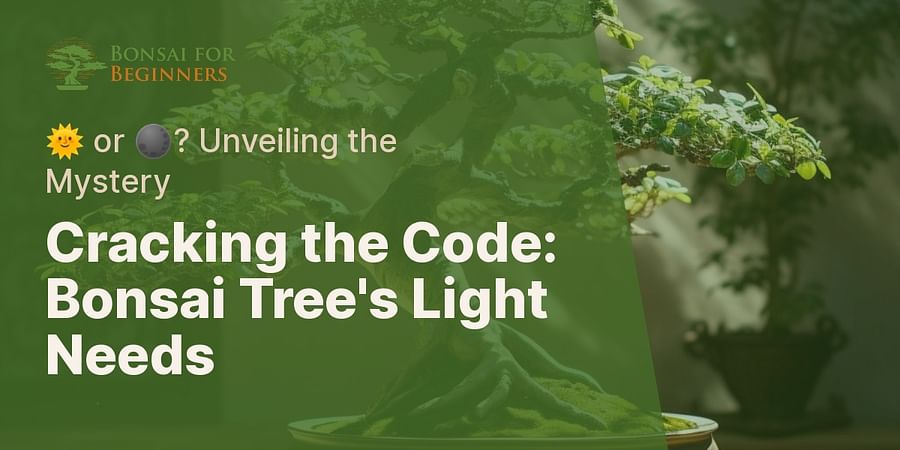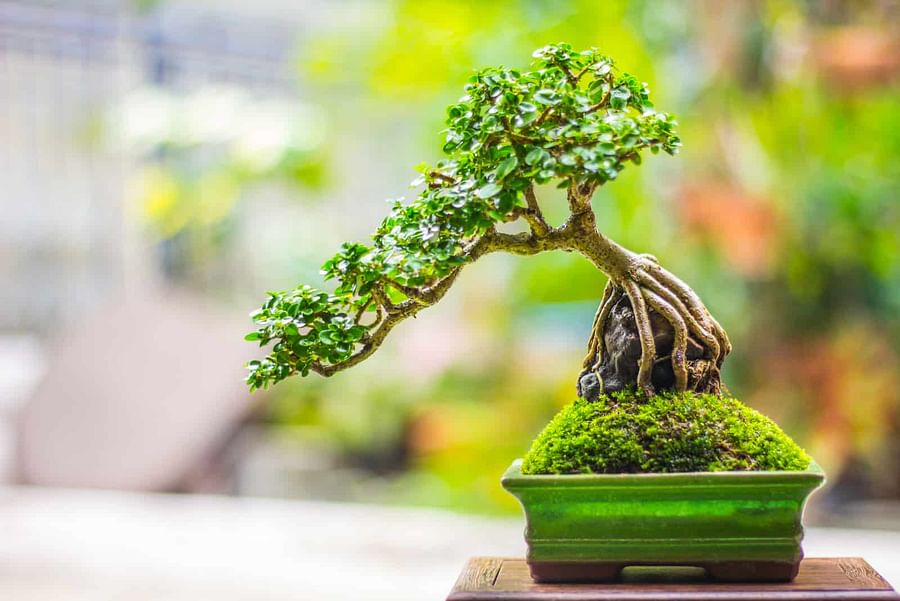Sun or Shade? Understanding the Light Requirements of a Bonsai Tree

Welcome, fellow bonsai enthusiasts! Ever wondered why your bonsai tree isn't flourishing as expected? Or why the leaves of your indoor bonsai tree seem to lack that vibrant hue? Well, it might be time to shed some light on the situation—quite literally!
Bonsai trees, like all living beings, need light to survive and thrive. But understanding bonsai tree light requirements is not as simple as placing your tree by the window and hoping for the best. It's like a delicate dance, a balancing act of not too much, nor too little—a Goldilocks situation if you will.
Whether you're nursing an overwatered bonsai tree back to health or just starting your journey with redwood bonsai, understanding the light requirements of your bonsai tree can be the difference between a bonsai that merely survives and one that thrives. Ready to illuminate your bonsai care knowledge? Let's dive in!
Think of light as the magical ingredient in the life recipe of your bonsai tree. It's the spark that ignites the process of photosynthesis, the very heart of a plant's existence. Photosynthesis, for those who need a quick science refresher, is the process where plants, using sunlight, convert water and carbon dioxide into glucose and oxygen. The glucose serves as food for the plant, while oxygen, well, let's just say we humans wouldn't be here without it.
Now, imagine your bonsai tree, a miniaturized yet robust embodiment of nature, performing this miraculous process. Each ray of light it receives is like a love note from the sun, helping it to grow, to breathe, to thrive. But how much light does your bonsai tree really need? Is there such a thing as too much love from the sun? And what happens if your bonsai tree is more of a shadow dweller? Can bonsai trees be kept indoors all year round?
Comprehending the lighting needs of your bonsai tree is like learning its unique dialect. It lets you decode its requirements, and fosters the revival of struggling bonsais. Whether your bonsai has had a bit too much water or maybe not enough, lighting remains a key factor in its survival. Thus, we embark on a journey through the intricate interplay of light and bonsai trees.

Now, let's dive deeper into the world of bonsai tree light requirements. Did you know that the Ficus Bonsai thrives in bright, indirect light while the Desert Rose Bonsai basks in full sun? Fascinating, isn't it?
Understanding bonsai trees isn't just about knowing their species, it's also about acknowledging their individuality. Just like humans, bonsais of the same species can have different light preferences based on their age and health. An older, ailing tree might require less light than a young, vigorous one.
Are you grappling with a wilting bonsai? It could be an overwatered bonsai tree or an underwatered bonsai tree. Or, it could be struggling with inadequate light. But don't worry, we'll help you learn how to save a bonsai tree. Remember, understanding your bonsai is the first step to reviving it. Proper care and attention to light requirements can work wonders.
Armed with knowledge about the light requirements of different bonsai species, we'll now reveal how to guarantee your bonsai tree is bathed in the correct brightness.
Following these steps will help ensure your bonsai tree gets the light it needs. But what if you're already facing issues due to inadequate or excessive light exposure? Let's move on to troubleshooting these common issues.
Ever peeked at your bonsai tree and wondered, "Why are those leaves turning yellow?" or "Why does it look so droopy?" Chances are, your bonsai is either throwing a shade party it wasn't invited to or basking in a sunbath that's a bit too hot. Yes, even trees can get sunburnt!
An overwatered bonsai tree can also be a sneaky culprit of inadequate light exposure, as too much water can lead to root rot, making it difficult for your tree to absorb the light it needs. On the other hand, an underwatered bonsai tree might be struggling to perform photosynthesis effectively, causing it to wilt.
Wondering how to shield your bonsai tree from light-related woes? Slight tweaking, like relocating your tree to a sunnier locale, can do wonders. Keep in mind that bonsais, like us, need a well-rounded diet of light - not excessively, or scantily. For more advice on nurturing bonsais indoors, glance at our comprehensive guide. Curious about the science of bonsai tree light requirements? Peruse this enlightening article!
Test your knowledge about the light requirements of bonsai trees with this interactive quiz.
Learn more about 🌞 Understanding the Light Requirements of Bonsai Trees 🌳 or discover other Bonsai for Beginners quizzes.
Thus, we return to where our story started: the enchanting dance of the bonsai tree under the golden sun. Recognizing and fulfilling the light needs of these tiny wonders is paramount. It's in this mesmerizing light dance that they truly flourish. You're now equipped with the skills to care for these sun-admirers, be they overwatered or parched, and even rescue a bonsai on the verge of fading.
As you journey into the world of indoor bonsai tree care, remember this: every bonsai has its own rhythm and light requirements. It's a delicate ballet, a dance unique to each tree, that you, as a bonsai artist, have the privilege to choreograph. But what if your bonsai tree falters, loses its step in the dance of light and life? Ah, not to worry. Our guides on how to revive bonsai trees and understanding bonsai trees will be there to help you.
Carry on, let your bonsai soak up the spotlight and observe its growth in stature, character, and allure. Take a moment, bonsai maestro, for you have lit the way to bonsai excellence. And bear in mind, the bonsai artist's journey is an endless sunset.
Post a comment